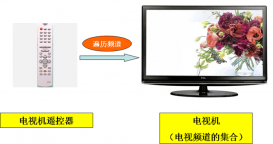YII的models中的rules部分是一些表单的验证规则,对于表单验证十分有用,在相应的视图(views)里面添加了表单,在表单被提交之前程序都会自动先来这里面的规则里验证,只有通过对其有效的限制规则后才能被提交,可以很有效地保证表单安全和信息的有效性。还是给大家具体说明一下:
以下是视图(views)部分的简单代码:
|
1
2
3
4
5
6
7
8
9
10
11
12
13
14
15
16
17
|
<?php $form=$this->beginWidget('CActiveForm', array( 'id'=>'tag-form', 'enableAjaxValidation'=>false, )); ?> <div class="row"> <?php echo $form->labelEx($model,'tagname'); ?> <?php echo $form->textField($model,'tagname',array('size'=>20,'maxlength'=>32)); ?> </div> <div class="row"> <?php echo $form->labelEx($model,'tagtype'); ?> <?php echo $form->radioButtonList($model,'tagtype'array(1=>"普通TAG",2=>"系统默认TAG"),array('separator'=>'','labelOptions'=>array('class'=>'tagtypelabel'))); ?> </div> <?php echo $form->errorSummary($model); ?> <div class="row buttons"> <?php echo CHtml::submitButton($model->isNewRecord ? '添加' : '修改'); ?> </div> <?php $this->endWidget(); ?> |
模型(models)中rules部分的简单代码:
|
1
2
3
4
5
6
7
8
9
10
11
12
|
public function rules() { return array( array('tagname,tagtype', 'required'), array('tagtype', 'numerical', 'integerOnly'=>true), array('tagname', 'length', 'max'=>32), array('tagname', 'match', 'pattern'=>'/^[\x{4e00}-\x{9fa5}A-Za-z0-9]+$/u', 'message'=>'标签不合法,必须为汉字、字母或者数字!'), array('tagname', 'checktagname', 'on'=>'create,update'),//插入TAG时检查是否已经存在该tag array('tagid, tagname, tagtype', 'safe', 'on'=>'search'), ); } |
系统默认有这些验证规则:
boolean : CBooleanValidator 的别名, 确保属性的值是CBooleanValidator::trueValue 或 CBooleanValidator::falseValue .
captcha : CCaptchaValidator 的别名,确保了特性的值等于 CAPTCHA 显示出来的验证码.
compare : CCompareValidator 的别名, 确保了特性的值等于另一个特性或常量.
email : CEmailValidator 的别名,确保了特性的值是一个有效的电邮地址.
default : CDefaultValueValidator 的别名, 为特性指派了一个默认值.
exist : CExistValidator 的别名, 确保属性值存在于指定的数据表字段中.
file : CFileValidator 的别名, 确保了特性包含了一个上传文件的名称.
filter : CFilterValidator 的别名, 使用一个filter转换属性.
in : CRangeValidator 的别名, 确保了特性出现在一个预订的值列表里.
length : CStringValidator 的别名, 确保了特性的长度在指定的范围内.
match : CRegularExpressionValidator 的别名, 确保了特性匹配一个正则表达式.
numerical : CNumberValidator 的别名, 确保了特性是一个有效的数字.
required : CRequiredValidator 的别名, 确保了特性不为空.
type : CTypeValidator 的别名, 确保了特性为指定的数据类型.
unique : CUniqueValidator 的别名, 确保了特性在数据表字段中是唯一的.
url : CUrlValidator 的别名, 确保了特性是一个有效的路径.
基本上还是比较全面的,一般的都够用了,但是还是有时候有的验证需要自定义。就以上面的代码为例,我们在添加TAG时需要检查系统之前是否已经存在这个TAG,如果存在则不让用户添加。这个就需要在添加之前去查询数据库,看该TAG是否已经存在,这里我们就需要自定一个验证规则了。
关键有一下两个步骤:
1、在rules中 添加代码:array('tagname', 'checktagname', 'on'=>'create,update'),//插入TAG时检查是否已经存在该tag
注:我在其中用了 'on'=>'create,update',所以这个验证规则之对create,update场景生效
2、在该模型(models)中添加验证函数:
|
1
2
3
4
5
6
|
public function checktagname($attribute,$params){ $oldtag = Tag::model()->findByAttributes(array('tagname'=>$this->tagname)); if($oldtag->tagid > 0){ $this->addError($attribute, '该TAG已经存在!'); } } |
其中需要说明的是:
(1)该验证函数的参数必须是($attribute,$params),不能缺少其中任何一个;
(2)$this->addError($attribute, '该TAG已经存在!');这个是你想要在视图中输出的错误提示信息。
就是这么简单,有了这个方法,表单验证的各种想要的规则就都可以自定义了。
下面给大家介绍Yii自定义验证规则
最简单的定义验证规则的方法是在使用它的模型(model)内部定义。
比方说,你要检查用户的密码是否足够安全.
通常情况下你会使用 CRegularExpression 方法验证,但为了本指南,我们假设不存在此验证方法.
首先在模型(model)中添加两个常量
const WEAK = 0;
const STRONG = 1;然后在模型(model)的 rules 方法中设置:
|
1
2
3
4
5
6
7
8
9
|
/** * @return array validation rules for model attributes. */public function rules(){ return array( array('password', 'passwordStrength', 'strength'=>self::STRONG), );} |
确保你写的规则不是一个已经存在的规则,否则将会报错.
现在要做的是在模型(model)中创建一个名称为上面填写的规则的方法(即 passwordStrength)。
|
1
2
3
4
5
6
7
8
9
10
11
12
13
14
15
16
|
/** * check if the user password is strong enough * check the password against the pattern requested * by the strength parameter * This is the 'passwordStrength' validator as declared in rules(). */public function passwordStrength($attribute,$params){ if ($params['strength'] === self::WEAK) $pattern = '/^(?=.*[a-zA-Z0-9]).{5,}$/'; elseif ($params['strength'] === self::STRONG) $pattern = '/^(?=.*\d(?=.*\d))(?=.*[a-zA-Z](?=.*[a-zA-Z])).{5,}$/'; if(!preg_match($pattern, $this->$attribute)) $this->addError($attribute, 'your password is not strong enough!');} |
刚才创建的方法需要两个参数:* $attribute 需要验证的属性* $params 在规则中自定义的参数
在模型的 rules 方法中我们验证的是 password 属性,所以在验证规则中需要验证的属性值应该是 password.
在 rules 方法中我们还设置了自定义的参数 strength,它的值将会放到 $params 数组中.
你会发现在方法中我们使用了 CModel::addError().
添加错误接受两个参数:第一个参数是在表单中显示错误的属性名,第二个参数时显示的错误信息 。
完整的方法:继承 CValidator 类
如果你想把规则使用在多个模型(model)中,最好的方法时继承 CValidator 类。
继承这个类你可以使用像 CActiveForm::$enableClientValidation (Yii 1.1.7 版本后可用) 类似的其他功能。
创建类文件
首先要做的是创建类文件.最好的方法时类的文件名和类名相同,可以使用 yii 的延迟加载(lazy loading)功能。
让我们在应用(application)的扩展(extensiions)目录(在 protected 文件夹下)下新建一个文件夹.
将目录命名为: MyValidators
然后创建文件: passwordStrength.php
在文件中创建我们的验证方法
|
1
2
3
4
5
6
7
|
class passwordStrength extends CValidator{ public $strength; private $weak_pattern = '/^(?=.*[a-zA-Z0-9]).{5,}$/'; private $strong_pattern = '/^(?=.*\d(?=.*\d))(?=.*[a-zA-Z](?=.*[a-zA-Z])).{5,}$/';...} |
在类中创建属性,此属性为在验证规则中使用的参数.
CValidator 会自动根据参数来填充这些属性.
我们也创建了两个其他的属性,它们为 preg_match 函数使用的正则表达式.
现在我们应该重写父类的抽象方法(abstract method) validateAttribute
|
1
2
3
4
5
6
7
8
9
10
11
12
13
14
15
16
17
18
19
20
|
/** * Validates the attribute of the object. * If there is any error, the error message is added to the object. * @param CModel $object the object being validated * @param string $attribute the attribute being validated */protected function validateAttribute($object,$attribute){ // check the strength parameter used in the validation rule of our model if ($this->strength == 'weak') $pattern = $this->weak_pattern; elseif ($this->strength == 'strong') $pattern = $this->strong_pattern; // extract the attribute value from it's model object $value=$object->$attribute; if(!preg_match($pattern, $value)) { $this->addError($object,$attribute,'your password is too weak!'); }} |
上面的方法我认为就不用解释了.当然你也可以在 if 的条件中使用常量,我推荐使用.













